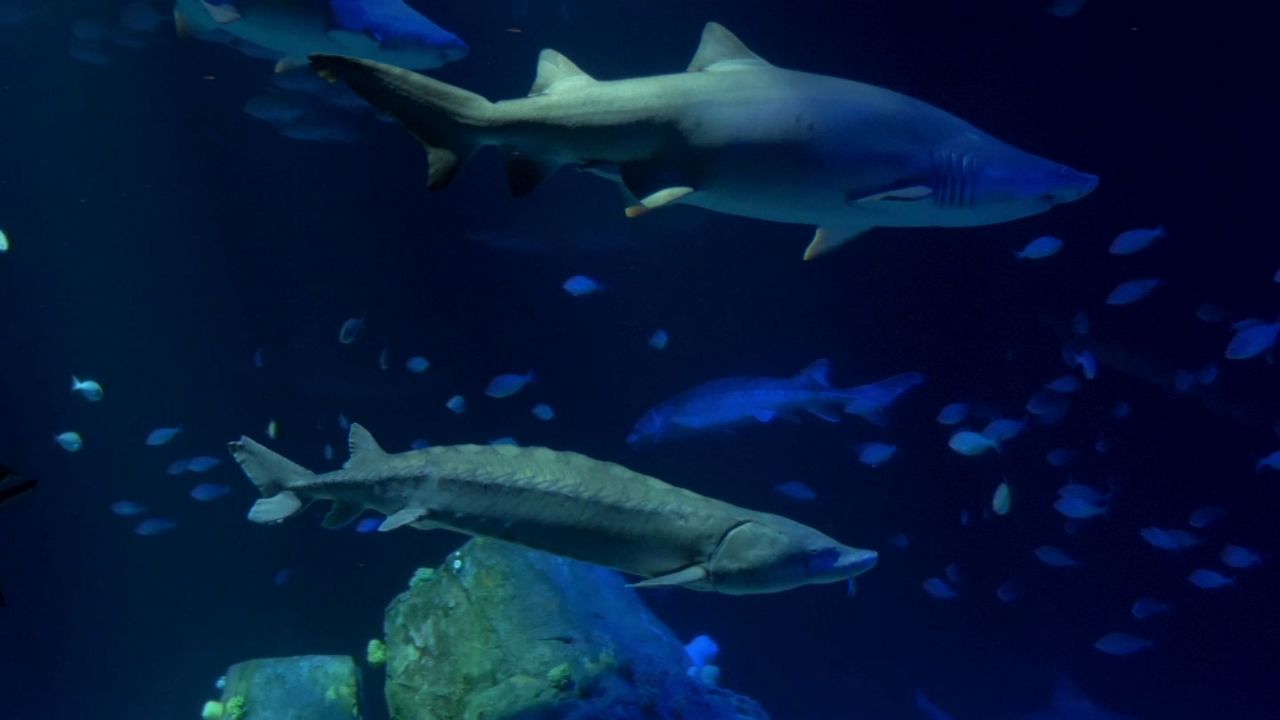Among the sharks, fish, rays and turtles at the Ocean’s Wonders exhibit at the New York Aquarium, visitors will now be treated to a rare sighting: Atlantic Sturgeon, a species once prevalent in New York.
The Aquarium introduced five Atlantic Sturgeon to its Hudson Canyon’s Edge display, which is dedicated to portraying the marine ecosystem off the coast of New York. Sturgeon can live as long 60 years, and grow to 14 feet long and 800 pounds. Those swimming here are about 6 feet long.
Director of the New York Aquarium Jon Dohlin explained why he’s so keen on the aquarium’s newly acquired fish, “these animals are in listed as endangered. It’s very difficult to have them to display. We are really fortunate and this is a very rare event.”
Often referred to as an ancient fish or living fossils, Sturgeon have been around since prehistoric times.
“They were once so common in the waters of New York, they were actually referred to as Albany beef,” Dohlin said. “And they were sort of the working man’s food, so plentiful that they pulled them up by the millions of tons by the early 1900s. That fishery had collapsed because they took so many fish, their caviar was so valuable and they started to degrade the spawning habitat in the Hudson River, so by 2012 they were listed as endangered.”
Their resemblance to dinosaurs can be seen in their big bony structure like armored plates. They have a downward facing mouth and flat underbelly to feed at the ocean’s bottom.
“Atlantic Sturgeon are what we call anadromous fish, which is they live their adult lives out in the ocean on the coast right around here New York,” Dohlin said. “And then they moved up the Hudson River and other rivers along that mid-Atlantic to spawn.”
Adult female and young Sturgeon became so scarce, fishing for Atlantic sturgeon was banned in 1996. Conservationists are now trying to bring the species back. The five Sturgeon here were raised by the Maryland Department of Natural Resources aquaculture program. The Aquarium had to be named a satellite research facility by the US Fish and Wildlife Service to get them. Now the Sturgeon can once again be seen in New York, if not in the Hudson, here at the aquarium.



